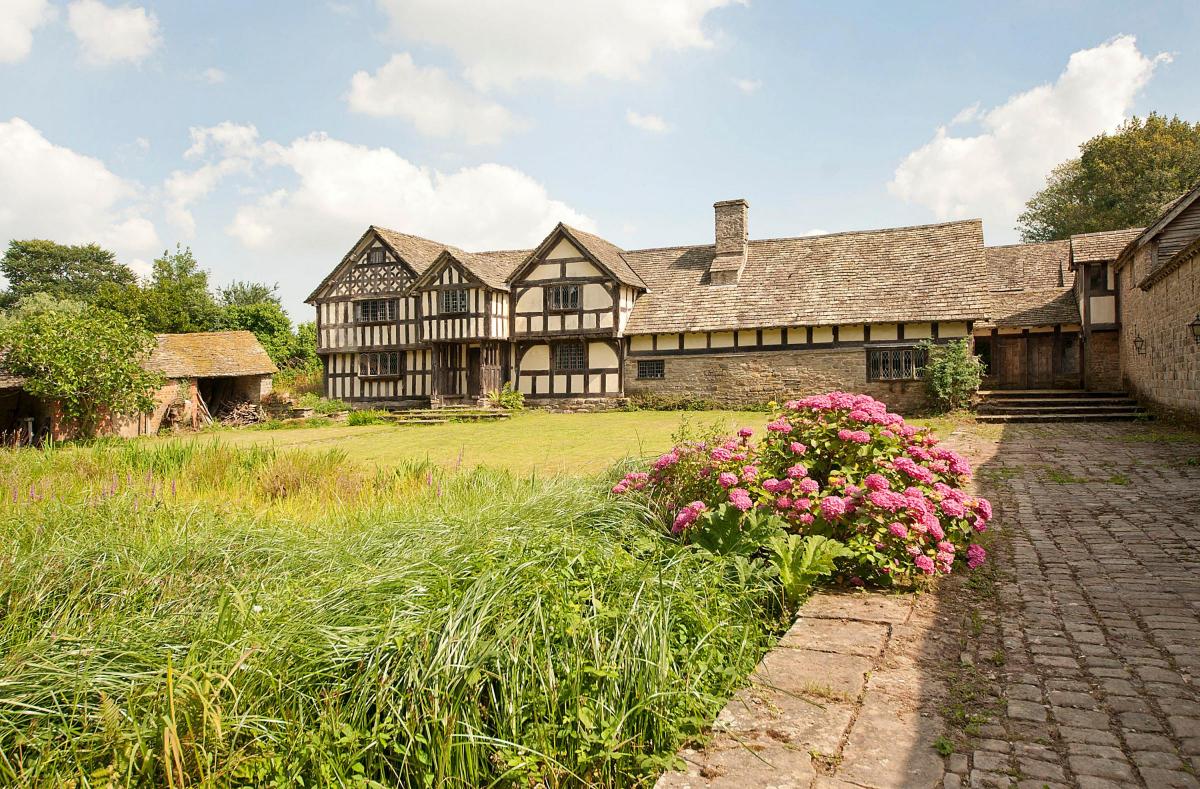IN its heyday Penrhos Court was 'Le Manoir au Quat’ Saisons' of The Marches.
The buildings date back to the 13th century, and have gone through many incarnations in the past seven centuries. The main residence offers 15-bedroom accommodation in the house and surrounding buildings, plus a former nationally renowned cookery school. Penrhos Court is now primed to be brought back to life.
The Court’s reputation during the 1970s through to the 1990s was as a secluded hideaway for film and rock stars, and authors appearing at Hay Festival.
It was the brainchild of businessman Martin Griffiths and his partner Daphne Lambert who bought the then derelict buildings in 1971. They lovingly restored the hall, manor house and byre buildings into a successful hotel with a restaurant.
Planning permission has been granted to create four dwellings at Penrhos Court, which would divide the Long Barn into two dwellings along with the court and barn.
Permission has also been granted for the construction of two garage blocks.
Depending on how a new owner decided to configure the available space, the Court and the southeast corner of the Long Barn will offer around 9,500sqft, while the two dwellings created out of the remainder of the Long Barn will be around 3,100sqft and 2,800sqft respectively.
What visitors will see is a fine Grade II listed building with a handsome timber frame under a stone tiled roof, all of which has been renovated, refurbished and extended significantly over recent years.
As well as Penrhos Court itself, the property comes with barn forming the north side of the courtyard, and The Long Barn, which forms the southern side of the quadrant, and an adjacent open sided garden building able to house the proposed biomass boiler. Along the western side of the property is The Barn.
A stone stepped terrace leads to portico entrance into the Court itself.
The ground floor, with its flagstone floors, has an impressive banqueting hall, with its arched cruck beams and minstrels’ gallery. The snug has a vast open fireplace and the dining and drawing rooms are either side of the entrance hall.
The wing at the back of the Court includes extensive kitchens, larders, cloakrooms and staff accommodation above.
On the first floor are three rooms which are ideal as a master bedroom suite with bathroom. A corridor connects the Court to the south east corner of the wing with a further entrance hall and second staircase.
A corridor connects the Court to the south east corner of The Long Barn. This building was built some 30 years ago and can be reconfigured in many ways to suit particular requirements.
It complements its neighbouring buildings and completes the courtyard. An entrance hall and stone staircase is the link with the Court in the south east corner.
The main part of this wing comprises five en suite bedrooms and the laundry room on the ground floor, above which on the first floor is an arrangement of six further en suite bedrooms.
Also incorporated within this building are two suites on both floors, each with its own staircase and each with two bedrooms and en suite bathrooms.
Central to the wing is the eye catching reception room which opens up to the roof ridge and has a south facing picture window to the eaves. The timber framing of the building is highlighted in this naturally light room.
At the far end of the wing are two one-bedroom holiday cottages each with a living room, kitchen and bathroom and mezzanine floor.
The former hotel reception room at the very end of the building has an office above.
Situated opposite The Court is The Barn, which is an attractive two-storey building with a single-storey extension featuring a large inglenook fireplace.
Current owner John Rudge said: “Where we go from here is up to interested purchasers. For example, you could take the main hall for your own residence and have five highly lucrative rental units in the remaining space and outbuildings.
The renowned restaurant enjoyed a constant stream of stars signing the visitors’ book in its day. Johnny and Fanny Craddock wrote about Penrhos Court and the likes of Queen, Led Zeppelin, Mike Oldfield and Terry Jones of Monty Python fame all visited. Two scrapbooks lovingly kept by Martin Griffiths and Daphne Lambert testify to the former glories of Penrhos Court. The Sunday Times’ critic AA Gill once wrote: “Penrhos Court is a breathtakingly beautiful small hotel, organically folded into some of the most pretty and fibrous country in England.”
Jonathan Bengough of Knight Frank in Hereford said: “Penrhos Court has huge potential. Where its future lies is in the hands of a purchaser with the vision to take this unusual property and bring it back to life.”





Comments: Our rules
We want our comments to be a lively and valuable part of our community - a place where readers can debate and engage with the most important local issues. The ability to comment on our stories is a privilege, not a right, however, and that privilege may be withdrawn if it is abused or misused.
Please report any comments that break our rules.
Comments are closed on this article.